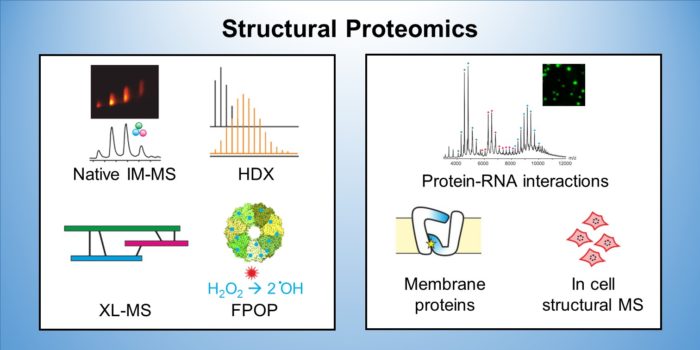Dr Anton Calabrese
- Position
- University Academic Fellow in Biological Mass Spectrometry
- Areas of expertise
- Structural Proteomic; Membrane proteins; Protein conformational dynamics; Protein-nucleic acid interactions
- Phone
- +44(0) 113 343 7272
- Location
- Astbury 9.108g
- Faculty
- Biological Sciences
- School
- Molecular and Cellular Biology
Introduction
Structural mass spectrometry methods are unique in their ability to study the weak and transient interactions that underlie many biological processes in complex systems, regardless of their size, revolutionising our understanding of dynamic assemblies that are not amenable to other structural methods.
In our research we use a mass spectrometry-based integrative structural biology toolkit, and a combination of other biochemical and biophysical techniques, to elucidate the functional mechanisms of protein complexes, and characterise dynamic and transient assemblies involved in essential cellular functions, cellular organisation and disease.
Current major projects
- Interrogating the assembly mechanism of viral factories.
- Protein architectures, dynamics and interactions mediating LLPS.
- Integrative structural biology and structural proteomics.
- Development of in cell structural MS methods.
Detailed research programme
Biological mechanisms rely on biomolecules adopting transient ‘excited’ states, and forming ephemeral, sometimes heterogeneous, assemblies. Structural characterisation of these functionally important species in time and space remains a key challenge that requires the development of new methodologies. Our research focuses on the development and application of structural mass spectrometry (MS) methods, including native MS, ion mobility [IM], chemical crosslinking [XL], hydrogen-deuterium exchange [HX-MS], and fast photochemical oxidation of proteins [FPOP], to reveal new mechanistic insights about dynamic proteins and their assemblies.
Interrogating the assembly mechanism and composition of viral factories.
Viral replication factories in cells (sites of viral replication/assembly) are formed by viral non-structural proteins (NSPs) in a number of important human and animal pathogens, including Reoviruses and Rotaviruses (the major cause of >200,000 child deaths per annum). However, the molecular mechanism of viral factory assembly, and their precise role in virus replication remain unexplained. We use mass spectrometry based methods to understand the structure, dynamics and interactions of the non-structural proteins that mediate viral factory assembly, using non-structural proteins from Rotavirus as a model system. The ultimate aim of this work is to determine if targeting viral factory formation is a viable, novel strategy to combat viral infections.
Studying the architecture, conformational dynamics and interactions of proteins that undergo liquid-liquid phase separation.
Many cellular compartments are enclosed by membranes, with channels, pores and transporters regulating their composition. However, in the cytoplasm and nucleus, membrane-less organelles (MLOs) form by liquid-liquid phase separation (LLPS). These biomolecular condensates are heterogeneous, dynamic, multicomponent systems that respond to stress, and often comprise ribonucleoproteins (RNPs) that contain prion-like intrinsically disordered regions (IDRs), or low-complexity (LC) domains, along with RNA, and other cellular proteins. This makes it challenging to elucidate their composition, structure and biogenesis, and how this changes with time.
The material properties of condensates can vary, indeed maturation can result in them adopting more solid-like properties, for example amyloid. These solid-like deposits are associated with neurodegenerative diseases such as amyotrophic lateral sclerosis (ALS), frontotemporal lobar dementia (FTLD), and limbic-predominant age-related TDP-43 encephalopathy (LATE). By integrating data principally from state-of-the-art structural-MS and combining it with other functional, biochemical and biophysical methods we aim to establish the molecular principles of LLPS in neurodegeneration, unravelling how structural dynamics and RNA interactions mediate LLPS.
Development of chemical crosslinking and FPOP methods to study protein architecture/interactions in cells
One of the key challenges in structural biology is to elucidate how the dynamic interactome mediates biological function in the crowded cellular milieu. Recently, structural MS methods have been shown to be promising tools to achieve this endeavour, including XL-MS and in-cell FPOP, yielding unprecedented insights into the structure and organisation of cellular macromolecular assemblies. We aim to develop optimised XL-MS and FPOP workflows, exploiting the full potential of these techniques to elucidate the molecular composition and architecture of protein assemblies directly in cells.

